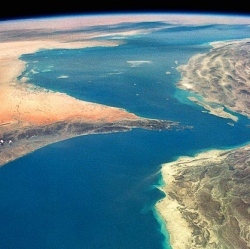
Blue Origin New Shepard flew again for the seventh time on Dec. 12, 2017, from Blue Origin’s West Texas Launch Site. Known as Mission 7 (M7), the mission featured the next-generation booster and the first flight of Crew Capsule 2.0. Crew Capsule 2.0 features large windows, measuring 2.4 feet wide, 3.6 feet tall.
M7 also included 12 commercial, research and education payloads onboard. Crew Capsule 2.0 reached an apogee of 322,405 feet AGL/326,075 feet MSL (98.27 kilometers AGL/99.39 kilometers MSL). The booster reached an apogee of 322,032 feet AGL/325,702 feet MSL (98.16 kilometers AGL/99.27 kilometers MSL).
The third New Shepard rocket booster and the new Crew Capsule 2.0 feature a few upgrades over previous designs. The capsule, for the first time, has actual windows rather than windows painted on the side, as was the case for previous test flights. Modifications to improve reusability for both the capsule and the booster were also made, such as improved paneling to access hardware for servicing between flights and more robust thermal protection.
The New Shepard system is a fully reusable vertical takeoff, vertical landing (VTVL) space vehicle.
The system consists of a pressurized capsule atop a booster. The combined vehicles launch vertically, accelerating for approximately two and a half minutes, before the engine cuts off. The capsule then separates from the booster to coast quietly into space. After a few minutes of free fall, the booster performs an autonomously controlled rocket-powered vertical landing, while the capsule lands softly under parachutes, both ready to be used again.
Reusability allows us to fly the system again and again. With each flight, we’ll continuously improve the affordability of space exploration and research, opening space for all.
Blue Origin plans to develop a reusable lunar lander, called Blue Moon, with technologies from New Shepard that could land on the moon and then relaunch up to an orbiting lunar station. The New Glenn rocket, once developed, would also give the company a rocket that could be used for a variety of missions from deep space launches to crewed flights.
